
A training manager has been frustrated with the quality of communication among trainees in his face-to-face training sessions and wants to try something new. With his supervisor’s permission, the trainer plans to convert all current training modules to a blended learning format, which would provide trainees and trainers the opportunity to interact with each other and learn the material in both a face-to-face and online environment. In addition, he is considering putting all of his training materials on a server so that the trainees have access to resources and assignments at all times.
With this scenario in mind, presented here is a best practices guide for this trainer to follow when converting his program to a distance learning format. This guide includes information that will assist the trainer in facilitating communication and learning among his students.
Introduction
In the last two decades the use of the internet has grown tremendously. A great deal of the face-to-face learning that has been used in the past is being complemented by distant learning technology. The development of the Internet and other web resources has made distance learning more achievable than ever and the benefits of distance learning are numerous. Flexibility is one of the top benefits of distance learning and asynchronous interaction allows the learners to participate when the time is most convenient for them. These benefits present the Internet with the ability to enhance communication and interaction. An analysis by Castaño‐Muñoz, Duart, and Sancho‐Vinuesa (2014), revealed that incorporating educational technology into the classroom is the strength that leads to improvement in interaction capacity.
Pre-planning Strategies
 Prior to converting learning materials to a distance learning format it is important to carefully plan the transition. The purpose of planning for this transition to online format is to establish methods to align the organization with the environment (Rowley & Sherman, 2001), in this case the online environment. Numerous issues can arise as a results of ineffective appropriate planning prior to being implemented. These issues will only delay implementation or cause the transition to be poorly executed. Many important strategies should be considered when planning and developing an online distance learning training program. For instance, the first consideration is to decide how you will determine whether or not the training is successful. This can be determined via training evaluations and pre and posttest, but this evaluation is important should not be overlooked. Also, when planning for an online training it is important to remember the needs of the learners that will be involved.
Prior to converting learning materials to a distance learning format it is important to carefully plan the transition. The purpose of planning for this transition to online format is to establish methods to align the organization with the environment (Rowley & Sherman, 2001), in this case the online environment. Numerous issues can arise as a results of ineffective appropriate planning prior to being implemented. These issues will only delay implementation or cause the transition to be poorly executed. Many important strategies should be considered when planning and developing an online distance learning training program. For instance, the first consideration is to decide how you will determine whether or not the training is successful. This can be determined via training evaluations and pre and posttest, but this evaluation is important should not be overlooked. Also, when planning for an online training it is important to remember the needs of the learners that will be involved.
Another key pre planning strategy is that the training manager in this scenario will need to solidify and be very clear the format being used. Since the trainer is new to this blended format, he will need to ensure that he is able to use this new learning model with proficiency. He also should look into all of the instructional materials and determine how best to convert them to a format that can be used online effectively. It is essential that the training manager be as familiar as possible with these materials as they can to better assist the learners (Simonson, Smaldino, & Zvacek, 2015). Of further importance, appropriate training and technology support for him as the trainer and for the learners. “Teaching with technology to learners who are not physically located in the same site where instruction is taking place requires a different set of skills and competencies than traditional education” (Simonson, Smaldino, & Zvacek, 2015). When comparing the traditional classroom to the online classroom, we must consider that some of the techniques used in a traditional classroom will not directly translate into a distance education method. Levy (2003) inferred that learners who complete orientation, student socialization, and training prior to their online courses had more successful outcomes in the courses. As for the instructors, it is equally as important they complete training program(s) successfully to familiarize themselves with the technology and assist with any revisions to the instructional strategies being used (Levy, 2003). Students and instructors should also to have adequate technology skills, so training and support may necessary in this area as well.
Enhancing the Original Training Program
For this scenario, it is very beneficial that the training modules are already developed so as they are being converted to an online format, the training manager can enhance the content. The modules can be converted into some form of presentation software such as Prezi presentations, Power Point, or other multimedia software. The use of multimedia presentations can enhance content delivery and improve learner engagement. Converting training materials from a face to face format to a blended learning format allows the trainer the opportunity to enhanced the materials in such a way that both learning and interaction are improved. The technology tools that are available for content enhancement are numerous. Examples of these tech tools include video, multimedia presentations, graphics images, wikis, and podcasts. Each technology tools can play a role in enhancing the content since it is not “what technologies are used, but how they are used what information is communicated using the technologies” (Simonson, Smaldino, & Zvacek, 2015).
Blended Learning 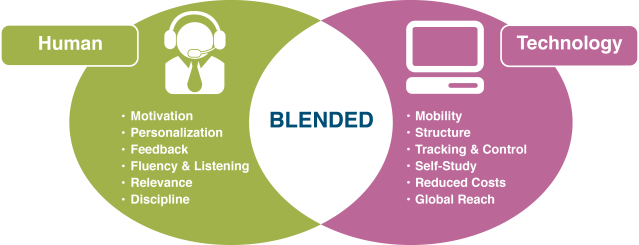
Before discussing blended learning further, distance education in general must be defined. Distance education has been defined as “institution-based, formal education where the learning group is separated, and where interactive telecommunications systems are used to connect learners, resources, and instructors” (p. 1) Simonson, Smaldino, and Zvacek (2015), further describe that there are four interwoven pieces that comprise distance education which are that it is again, it is institutionally based and not a self-study, there is a time and geographical separation between the teacher and student, interactive synchronous and asynchronous telecommunications, and the sharing resources among the learning community” (p. 33).
Blended learning is defined as a combination of face-to-face instruction with approximately 30-79% of instruction delivered online (Simonson, Smaldino, & Zvacek, 2015). Historically, face-to-face learning was the single solution of choice for most businesses but the use of virtual blended learning provides a combination of the best of both worlds. This diagram below “Virtual blended learning” by GlobalEnglish (2017) illustrates what has emerged as new solution—virtual blended learning—for this trainer.
Changes in the Trainer’s Role
The role of the trainer will certainly change as the training delivery method changes How will his role, as trainer, change in a distance learning environment? The key role of an online instructor or trainer is to demonstrate efficient training and assume “the responsibility of keeping discussions track, contributing special knowledge and insights, weaving together various discussion threads and course components, and maintaining group harmony” (Rohfeld & Hiemstra, 1995, p. 91). After the conversion he will no longer be just the training manager but he will also take on the role of facilitator.
Ultimately, the trainer’s role is now to facilitate the trainees’ learning within the blended learning environment. The trainer’s role in the online discussion is to encourage critical thinking and knowledge transfer (Palloff & Pratt, 1999) so that this training is effective. Trainees need to participate in order to learn, and the facilitator is there to encourage them to respond to one another (Freeman, n.d.). As the facilitator, he will ensure that students engage in meaningful discussion, critical thinking, through good participation. One important roles served by the trainer is to help lessen the feelings of isolation some trainees may experience online because this may be very different from what they are used to.
Encouraging Trainees to Communicate Online
The trainer will need to choose methods of instruction and training that will provide the trainees with enough interaction to keep them on task while encouraging them to explore other options and communicate with their classmates or online peers (Simonson, Smaldino, & Zvacek, 2015).
“Adults are motivated to learn after they experience a need in their life situation. For that reason, learning needs to be problem-focused or task-centered”
(Knowles, 2005).
|
According to Castaño‐Muñoz, Duart, and Sancho‐Vinuesa (2014), from the students’ point of view, it is more advantageous for the students to interact with one another in the learning process than to search for information individually. Further, technology in the blended environment can be used to replace and improve current activities, for example, instead of creating a handout with a series of questions, the trainer could, instead, post a discussion question online using a discussion board or discussion platform (Tucker, 2013). This will increase the level of online communication.
The success of an online course is significantly determined by just how actively engaged the students are. The trainer must bear in mind various types of learner interaction. The blended training must be set up in a way that would “emulate an instructor’s guidance and interaction” (Boling, et al 2012). Boling, et al (2012) allege that this type of guidance and interaction plays a “huge role in establishing a sense of community over the web for the learner given there is no physical setting”. Learners want a sense of community, so courses should be designed to foster this sense of belonging. This feeling of connectedness can be achieved by incorporating a significant amount of interactive multimedia as well (Boling, et al 2012). The secret to success of an online course is not which technologies are being used, but rather the way they are used and what material is revealed through the use of the technologies.
Closing
In summary, the purpose of this guide was to provide the user with several best practices. The trainer in this scenario should be able to use this guide when converting his current training program to a distance learning format. These skills if used consistently will aid the trainer in facilitating communication and delivering highly successful learning among his students. By keeping an open mind and listening to the feedback from his participants, he will continue to alter and improve the trainings.
References
Boling, E. C., Hough, M., Krinsky, H., Saleem, H., & Stevens, M. (2012). Cutting the distance in distance education: Perspectives on what promotes positive, online learning experiences. The Internet and Higher Education, 15(2), pp. 118–126,,
Castaño‐Muñoz, J., Duart, J. M., & Sancho‐Vinuesa, T. (2014). The Internet in face‐to‐face higher education: Can interactive learning improve academic achievement? British Journal of Educational Technology, 45(1), 149–159.
Global English (2017). Virtual blended learning. Retrieved from http://www.globalenglish.com/why_PEBS/blended_learning
Levy, S. (2003). Six Factors to Consider when Planning Online Distance Learning Programs in Higher Education. Online Journal of Distance Learning Administration, 6(1).
Rohfeld, R. W. & R. Hiemstra. (1995). Moderating discussions in the electronic classroom. In Z. Berge and M. Collins Computer Mediated Communication and the Online Classroom Volume 3: Distance Learning. (pp: 91-104) Cresskill NJ: Hampton Press.
Tucker, C. R. (2013). The basics of blended instruction. Educational Leadership, 70(6), pp. 57–60. Retrieved from http://www.ascd.org/publications/educational-leadership/mar13/vol70/num06/The-Basics-of-Blended-Instruction.aspx
Simonson, M., Smaldino, S., & Zvacek, S. (2015). Teaching and learning at a distance: Foundations of distance education. Charlotte, NC: Information Age Publishing, Inc.
 For this week, my task is to describe a project, either personal or professional, that experienced issues related to scope creep. Before doing this, I want to define a few elements. First, “a project is defined as a unique endeavor with a defined beginning and end. As such, it must have a project scope, that is, a well-defined list of tasks that are part of the project. Project scope is the fence that defines the boundaries of the project (Roseke, 2017).” Scope creep is defined as “the natural tendency of the client, as well as project team members, to try to improve the projects output as the project progresses” (Portny, Mantel, Meredith, Shafer, & Sutton, 2008). Further, scope creep occurs when additional components, features, or functions of a new product, requirements, or work are added to the project’s scope there were not originally authorized (Larson & Larson, 2009).
For this week, my task is to describe a project, either personal or professional, that experienced issues related to scope creep. Before doing this, I want to define a few elements. First, “a project is defined as a unique endeavor with a defined beginning and end. As such, it must have a project scope, that is, a well-defined list of tasks that are part of the project. Project scope is the fence that defines the boundaries of the project (Roseke, 2017).” Scope creep is defined as “the natural tendency of the client, as well as project team members, to try to improve the projects output as the project progresses” (Portny, Mantel, Meredith, Shafer, & Sutton, 2008). Further, scope creep occurs when additional components, features, or functions of a new product, requirements, or work are added to the project’s scope there were not originally authorized (Larson & Larson, 2009).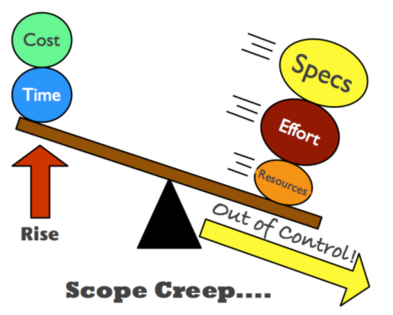
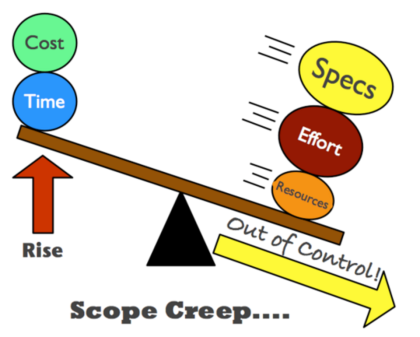

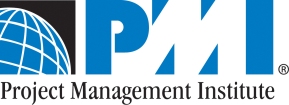

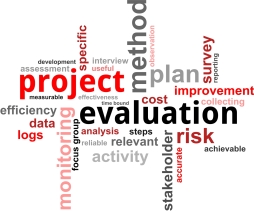 10). As a former program evaluator, I put on my evaluation hat and thought to myself that this post mortem analysis seems familiar. Further, I thought this is seemed to be very much like a form of programmatic evaluation. Reading more about this form of analysis I found that it is indeed also called a post-project evaluation (Portny et al., 2008). Ah ha!
10). As a former program evaluator, I put on my evaluation hat and thought to myself that this post mortem analysis seems familiar. Further, I thought this is seemed to be very much like a form of programmatic evaluation. Reading more about this form of analysis I found that it is indeed also called a post-project evaluation (Portny et al., 2008). Ah ha! implementation date. Everyone actively participated in the meetings and shared many ideas. I began drafting the workbook and several assignments. Each time I would submit these assignments for review I would not get any positive feedback. In fact, what I received would be additional ideas and suggestions for something completely different than what I submitted for review.
implementation date. Everyone actively participated in the meetings and shared many ideas. I began drafting the workbook and several assignments. Each time I would submit these assignments for review I would not get any positive feedback. In fact, what I received would be additional ideas and suggestions for something completely different than what I submitted for review.
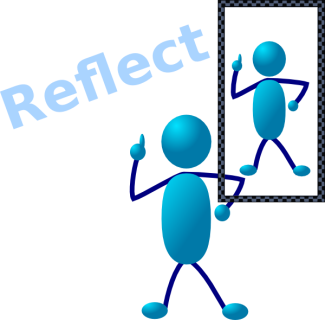 reflect on this course and realize that distance learning means so much more than I thought. Distance education is defined as “institution-based, formal education where the learning group is separated, and where interactive telecommunications systems are used to connect learners, resources, and instructors” (Schlosser & Simonson, 2010, p. 1). The composition of distance learning has been further described by Simonson, Smaldino, and Zvacek (2015) as four interrelated parts which are institutionally based with time and geographical separation between the teacher and student. There is interaction via synchronous and/or asynchronous communications and the sharing resources among the learning community (Simonson, Smaldino, & Zvacek, 2015). Distance learning will be the standard for many students in the next 10-20 years in my opinion. This will hold true particularly for students who are wanting to pursue their education while continuing to working full-time.
reflect on this course and realize that distance learning means so much more than I thought. Distance education is defined as “institution-based, formal education where the learning group is separated, and where interactive telecommunications systems are used to connect learners, resources, and instructors” (Schlosser & Simonson, 2010, p. 1). The composition of distance learning has been further described by Simonson, Smaldino, and Zvacek (2015) as four interrelated parts which are institutionally based with time and geographical separation between the teacher and student. There is interaction via synchronous and/or asynchronous communications and the sharing resources among the learning community (Simonson, Smaldino, & Zvacek, 2015). Distance learning will be the standard for many students in the next 10-20 years in my opinion. This will hold true particularly for students who are wanting to pursue their education while continuing to working full-time. As I continue to reflect on the future of distance learning I realize that it is not going to decline. As a matter of fact, distance learning will likely continue increase in acceptance and make education more widespread than ever before (Kennedy, S. 2017). In terms of the future of distance learning, it’s vital to a good understanding of the growth and progress thus far. According to Saad, Busteed, and Ogisi (2013), 5% of all adults in the U.S. are currently taking an online course. Because online courses and degrees present an enormous possibility for expanding access to college, this 5% is sure to rise. Due the accessibility and flexibility of distance learning, working individuals will have greater opportunities for higher education. In the near-term it is predicted that fewer and fewer students will be pursuing traditional on-campus degrees (Kennedy, S. 2017). As we move forward, more students will choose fully online or blended learning degree programs. As distance learning continues to gain authority and respect, the enrollment in distance learning programs will continue to grow.
As I continue to reflect on the future of distance learning I realize that it is not going to decline. As a matter of fact, distance learning will likely continue increase in acceptance and make education more widespread than ever before (Kennedy, S. 2017). In terms of the future of distance learning, it’s vital to a good understanding of the growth and progress thus far. According to Saad, Busteed, and Ogisi (2013), 5% of all adults in the U.S. are currently taking an online course. Because online courses and degrees present an enormous possibility for expanding access to college, this 5% is sure to rise. Due the accessibility and flexibility of distance learning, working individuals will have greater opportunities for higher education. In the near-term it is predicted that fewer and fewer students will be pursuing traditional on-campus degrees (Kennedy, S. 2017). As we move forward, more students will choose fully online or blended learning degree programs. As distance learning continues to gain authority and respect, the enrollment in distance learning programs will continue to grow.

 Prior to converting learning materials to a distance learning format it is important to carefully plan the transition. The purpose of planning for this transition to online format is to establish methods to align the organization with the environment (Rowley & Sherman, 2001), in this case the online environment. Numerous issues can arise as a results of ineffective appropriate planning prior to being implemented. These issues will only delay implementation or cause the transition to be poorly executed. Many important strategies should be considered when planning and developing an online distance learning training program. For instance, the first consideration is to decide how you will determine whether or not the training is successful. This can be determined via training evaluations and pre and posttest, but this evaluation is important should not be overlooked. Also, when planning for an online training it is important to remember the needs of the learners that will be involved.
Prior to converting learning materials to a distance learning format it is important to carefully plan the transition. The purpose of planning for this transition to online format is to establish methods to align the organization with the environment (Rowley & Sherman, 2001), in this case the online environment. Numerous issues can arise as a results of ineffective appropriate planning prior to being implemented. These issues will only delay implementation or cause the transition to be poorly executed. Many important strategies should be considered when planning and developing an online distance learning training program. For instance, the first consideration is to decide how you will determine whether or not the training is successful. This can be determined via training evaluations and pre and posttest, but this evaluation is important should not be overlooked. Also, when planning for an online training it is important to remember the needs of the learners that will be involved.
